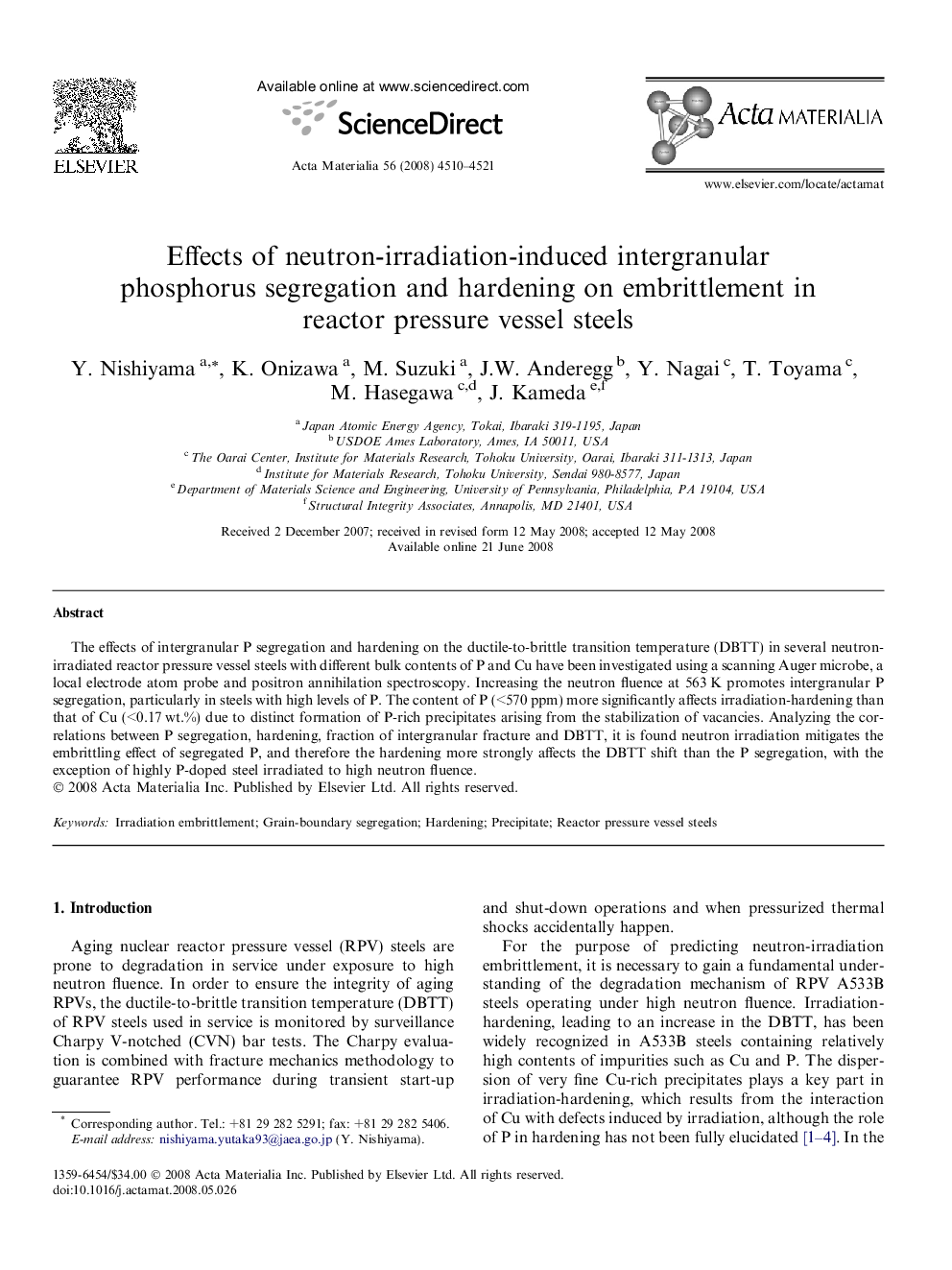| Article ID | Journal | Published Year | Pages | File Type |
|---|---|---|---|---|
| 1448372 | Acta Materialia | 2008 | 12 Pages |
The effects of intergranular P segregation and hardening on the ductile-to-brittle transition temperature (DBTT) in several neutron-irradiated reactor pressure vessel steels with different bulk contents of P and Cu have been investigated using a scanning Auger microbe, a local electrode atom probe and positron annihilation spectroscopy. Increasing the neutron fluence at 563 K promotes intergranular P segregation, particularly in steels with high levels of P. The content of P (<570 ppm) more significantly affects irradiation-hardening than that of Cu (<0.17 wt.%) due to distinct formation of P-rich precipitates arising from the stabilization of vacancies. Analyzing the correlations between P segregation, hardening, fraction of intergranular fracture and DBTT, it is found neutron irradiation mitigates the embrittling effect of segregated P, and therefore the hardening more strongly affects the DBTT shift than the P segregation, with the exception of highly P-doped steel irradiated to high neutron fluence.
